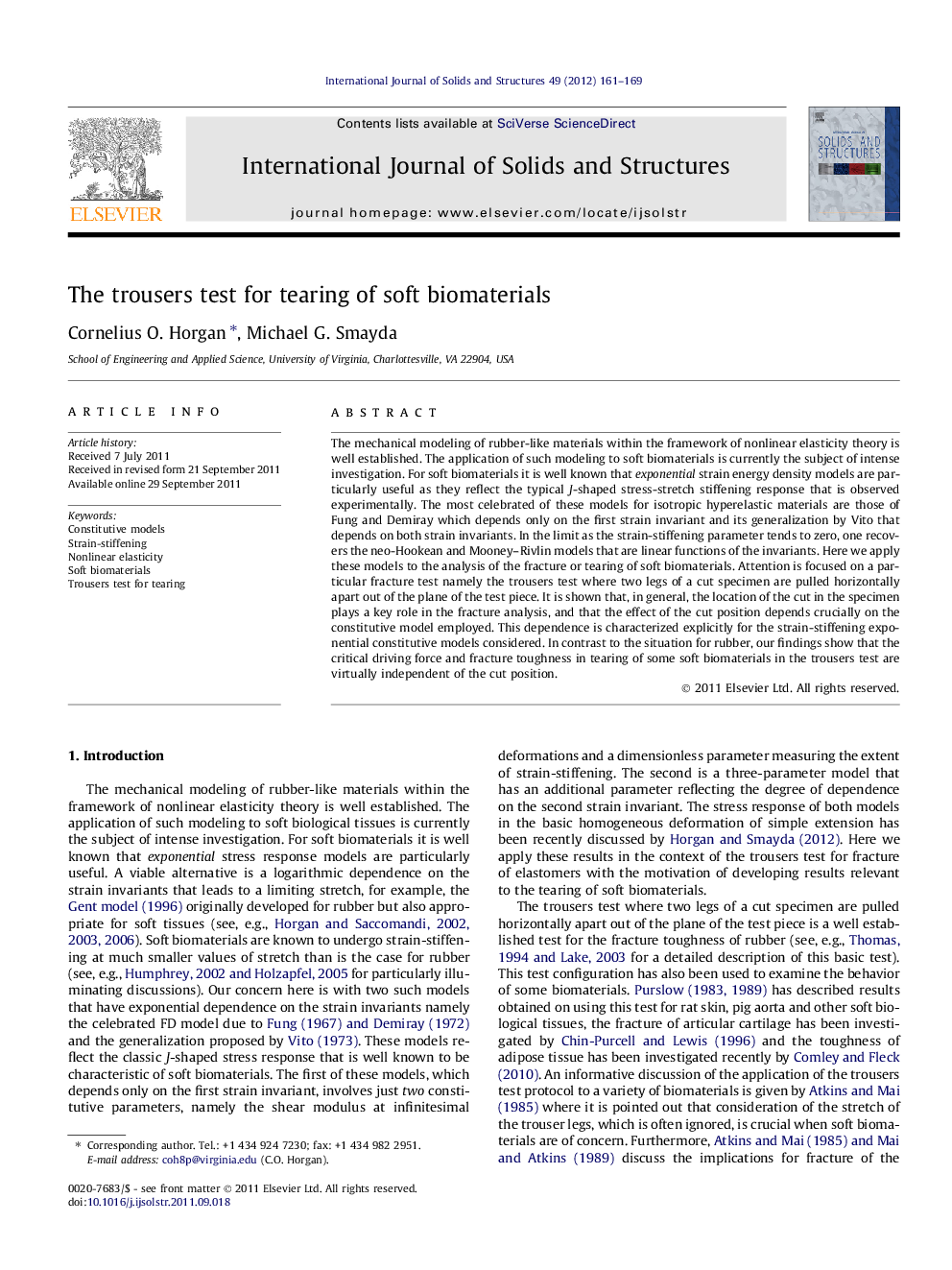| Article ID | Journal | Published Year | Pages | File Type |
|---|---|---|---|---|
| 278262 | International Journal of Solids and Structures | 2012 | 9 Pages |
The mechanical modeling of rubber-like materials within the framework of nonlinear elasticity theory is well established. The application of such modeling to soft biomaterials is currently the subject of intense investigation. For soft biomaterials it is well known that exponential strain energy density models are particularly useful as they reflect the typical J-shaped stress-stretch stiffening response that is observed experimentally. The most celebrated of these models for isotropic hyperelastic materials are those of Fung and Demiray which depends only on the first strain invariant and its generalization by Vito that depends on both strain invariants. In the limit as the strain-stiffening parameter tends to zero, one recovers the neo-Hookean and Mooney–Rivlin models that are linear functions of the invariants. Here we apply these models to the analysis of the fracture or tearing of soft biomaterials. Attention is focused on a particular fracture test namely the trousers test where two legs of a cut specimen are pulled horizontally apart out of the plane of the test piece. It is shown that, in general, the location of the cut in the specimen plays a key role in the fracture analysis, and that the effect of the cut position depends crucially on the constitutive model employed. This dependence is characterized explicitly for the strain-stiffening exponential constitutive models considered. In contrast to the situation for rubber, our findings show that the critical driving force and fracture toughness in tearing of some soft biomaterials in the trousers test are virtually independent of the cut position.
